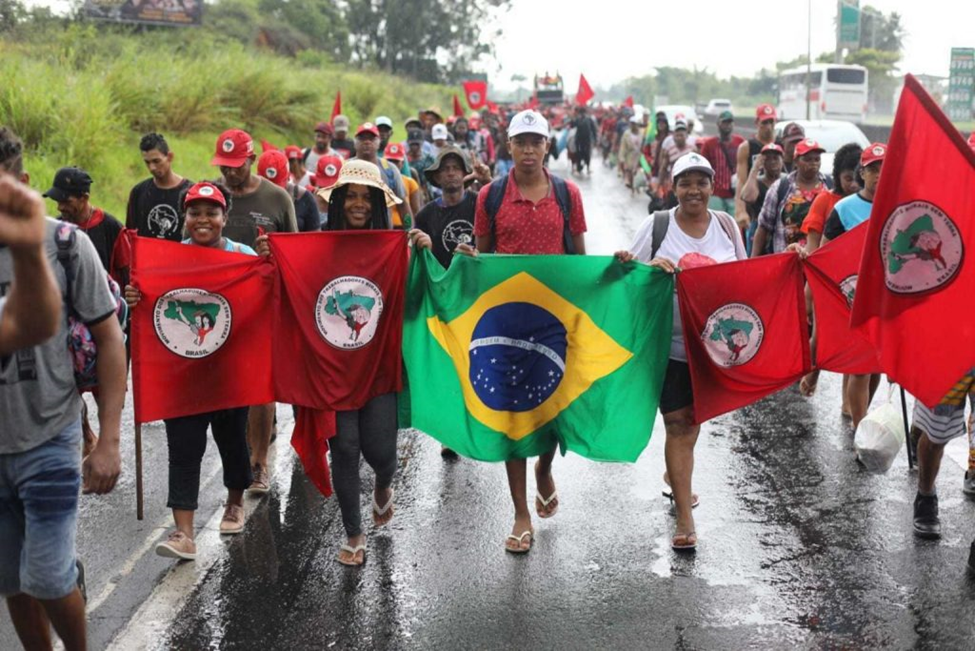7 Points that you need to know about the MST’s “Red April”

This year's April Campaign denounces hunger and slavery and reaffirms the struggle for land, democracy and in defense of the environment. Photo: MST/BA Communication Collective and Jonas Souza
1.How did the date come about?
The name “Red April” was created by the press when referring to MST activities this month. Throughout the month of April, the MST holds the National Day of Struggles in Defense of Agrarian Reform, organized throughout the country, reaffirming the centrality of the struggle for land in Brazil and the importance of implementing an Agrarian Reform project to develop the countryside, produce healthy food and fight hunger.
2.What are the MST’s demands in the Campaign this year?
This year, the MST is organizing the 26th National Day of Struggles in Defense of Agrarian Reform in 2023, which has as its motto the struggle “Agrarian Reform against hunger and slavery: for land, democracy and the environment!”. Actions are planned across the country to denounce the increase in cases of slave labor practiced by agribusiness, which dominates the blacklist of slave labor and does not produce food for the Brazilian people's table, in addition to destroying forests and the environment, with fires and the monoculture of commodities, with high amounts of pesticides.
3. What is the main date for the MST’s struggle in April?
On April 17, the International Day of Peasant Struggle is celebrated, created by Via Campesina, a group of peasant organizations of which the MST is a member, and which brings together peasant movements from five continents.
In Brazil, April 17 is remembered as the National Day of Struggle for Agrarian Reform, based on a decree signed by the then President of the Republic, Fernando Henrique Cardoso. On that date, the MST and a group of popular movements from the countryside and the city in Brazil and around the world carry out actions in defense of the struggle for Agrarian Reform and democratization of land in the country.
4. Why does the MST commemorate April 17?
The date is in honor and memory of the Massacre of Eldorado do Carajás, in which the Military Police of Pará attacked a demonstration of 1,500 Landless families, murdering 21 rural workers and leaving another 69 people wounded, on April 17, 1996, at the S curve of the highway, in Eldorado do Carajás, Pará. This year it has been 27 years of impunity since the massacre. For more information, see this history.
5. Why does the MST fight for People’s Agrarian Reform?
The MST supports People’s Agrarian Reform as a sustainable agriculture project to produce food for all Brazilian people in the countryside and in the city, and fight hunger, as opposed to agribusiness, which uses slave labor, spreading more misery and destruction in the countryside.
Agrarian Reform also generates employment and cooperative work, with greater dignity for rural workers. In addition to democratizing access to land and strengthening Brazilian democracy and reducing social inequalities.
6. For how long has the MST been struggling for the democratization of land in Brazil?
The MST has more than 39 years of struggle and resistance in the countryside and is looking forward to 40 years, fighting for land, for Agrarian Reform and for social changes, with occupations of large estates, roadsides and public buildings.
7. In how many states is the MST organized?
In four decades of marches and mobilizations across the country, from the collective organization of the Landless, today the MST is present in 24 states and organized in the five regions of the country, around 450 thousand families who conquered the land, implanting settlements with cooperatives, associations and collective groups of families who produce healthy food, preserve the environment and build rural communities with a dignified life. Learn more here.
*Edited by Fernanda Alcântara
